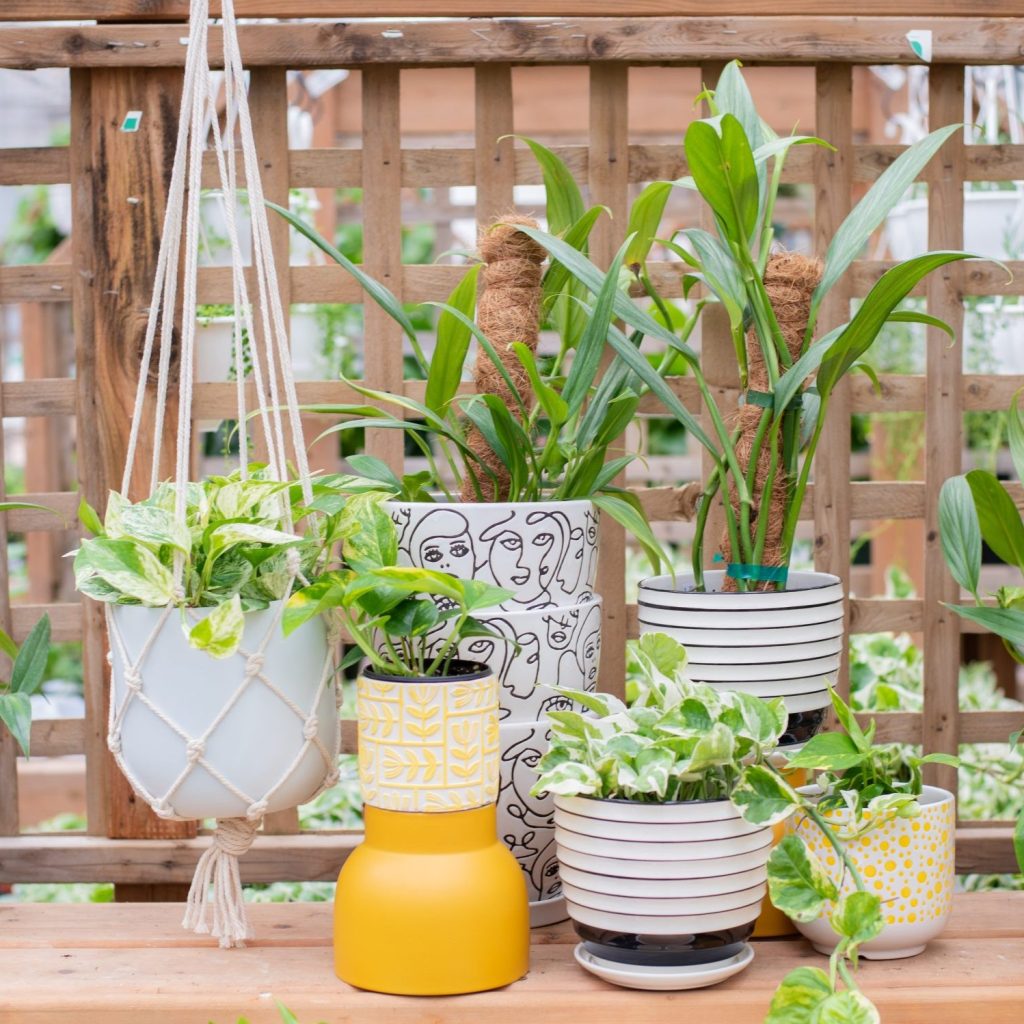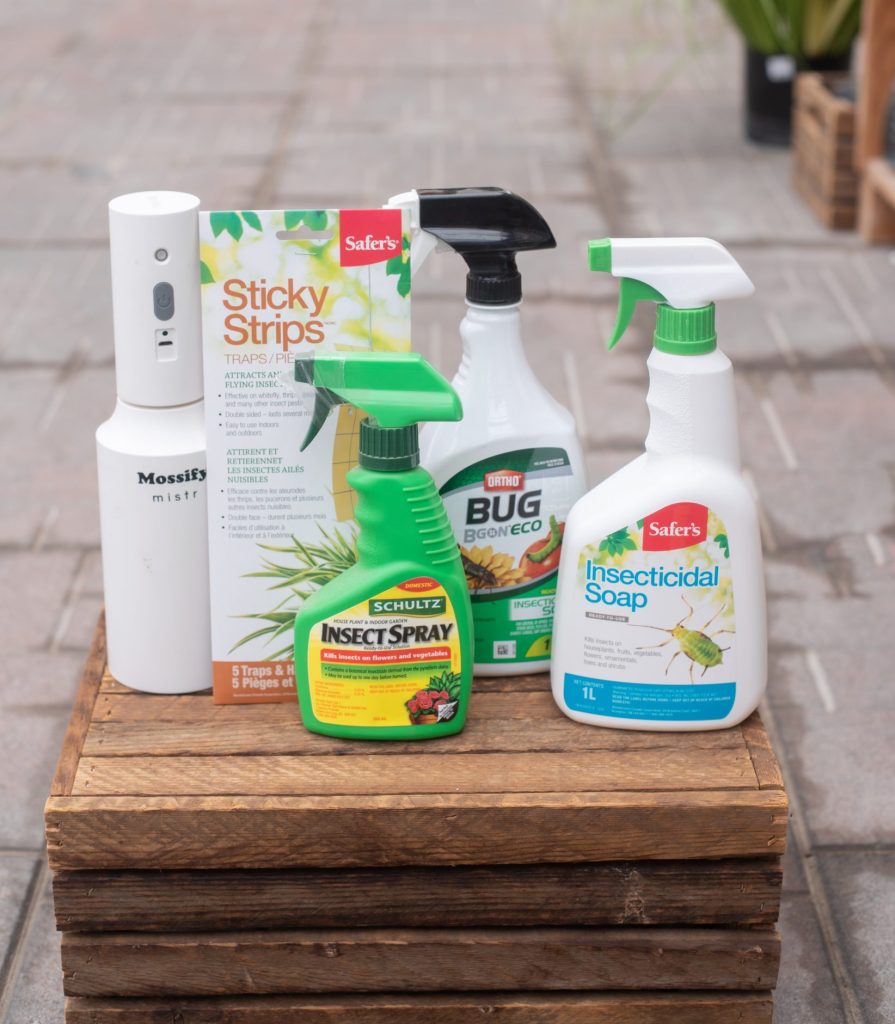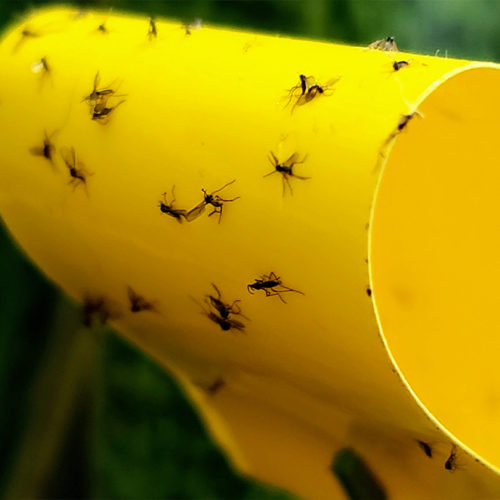
Tips for Bringing Your Houseplants Back Indoors for Winter
As we start getting into sweater weather and temperatures begin to drop, it’s time to start making a plan for any of your houseplants that were living their best life outside for the summer. This garden guide will cover everything you need to consider when you’re bringing your plants inside for the winter, making sure they acclimatize and stay healthy and happy indoors over the wintertime.
Preparing Plants to Brought Indoors
Make Sure Your Plants are Clean
The first step when bringing your plants inside is to make sure they are nice and clean. Wipe leaves with microfibre cloth to remove dust so they can better photosynthesize and process the light that’s going to be lower in the wintertime. Wiping down the leaves can help physically remove any insects and it also makes leaves nice and shiny.
Check Leaves for Insects & Pests
Most important when cleaning your plants is making sure the leaves are clean of any insects. When they’re outside they could pick up insects such as aphids or spider mites. While doing a visual inspection it’s important to check the bottom of the leaves and stems as it’s a common place to find those insects hanging out.
Insecticidal Soap Treatment

It’s a good idea to give your plants a preventative spray of insecticidal soap in case you miss any of those tiny spider mites. Using a soap that also has pyrethrum in its formulation such as Ortho Bug B Gon Eco or Schulz Insect Spray, you’ll find it gives you a one-two punch that works much better than insecticidal soap on its own.
The Mossify Mistr is not only great for plants that enjoy humidity, but it can also be used for the application of insecticidal soap. Just load the mister with the concentrate, turn on for continuous mist and gently apply to your plant, making sure to get both the top and bottom of the leaves. When misting your plant, aim for a light application so that water/product it isn’t beading and running off, (which is a waste of the product).
What about Soil?
Soil only needs to be treated if there is any issue such as fungus gnats. For more information on how to deal with fungus gnats, check out our garden guide!
Fall is not the ideal time to repot your houseplant, when taking your plant from bright and warm outdoor conditions and moving into cooler, darker and shorter days, it’s already going to be stressed! Moving your plant into a new pot or changing the soil is another strain and not advised unless necessary.
Inspect and Prune
As you’re inspecting your plant, now is a good time to remove any leaves that are dying off and trim any brown spots with pruners to clean it up.
Let’s Grow Together
Tips for Bringing Your Houseplant Inside for Fall
Join Will as he shares all the tips and tricks for preparing to bring your houseplants indoors for the colder months!

When to Start Bringing Plants Indoors?
Now that your plant has been cleaned up, it’s ready to start being moved inside overnight anytime we see that the temperatures are forecasted to be 10c or cooler. Some people will maintain a quarantine space for any plants that are still moving inside and outside to ensure that no pests make the leap to the rest of your collection.
10°C or Cooler: Start to Bring Your Plants Inside
As temperatures start to dip, that is the signal to start bringing our houseplants indoors. In our area we typically start to reach these temperatures overnight in September or October, which is a great time to start gradually bringing your plants indoors. Over a period of a week or two, you can slowly introduce your plants into more time indoors which gives them time to process and avoid going into shock from a sudden change in environment. Similar to how you acclimate them to the outside in the Spring, but in reverse!
7°c or Cooler: Make Sure Your Plants are Indoors!

Once temperatures are reaching 7°c or cooler it is important to have them acclimated to being indoors. Most houseplants are tropical, and these temperatures are colder than what they’re used to and reducing exposure to the cold will help to prevent shock and reduce stress on your planty friends.
If temperatures cool down before you get the chance to complete the cleaning process or you’re unsure if the plant is pest-free, this would be the time to introduce a quarantine process. Create a separate space at least 6ft away from your main collection for the plants that you are acclimating back indoors. This way if by chance there are any pests or problems, they don’t have the opportunity to jump and spread onto the rest of your collection. After a couple weeks, the risk of spreading any issues is minimal if none are seen by this point, and it is safe to re-introduce these plants back into the rest of your collection.
Winter Care Tips
Once your houseplants have been brought inside, it is important to also adjust the space they occupy and the care that you are giving them so they can continue to be happy as the seasons change from summer to fall and then into winter.
Increase Humidity
The level of humidity that is outside and inside can be very different, especially once those furnaces start kicking on and create a dry environment indoors. You may want to consider moving your plants into a space where there is more humidity or investing in a humidifier, keeping your humidity level closer to 60 is ideal for most houseplants to be happy.
Provide More Light
With the change of seasons, the intensity and duration of daylight begins to shorten. Even a plant that has been happy all summer long may start to struggle and need to be relocated into a sunnier spot, a south or west facing window is going to be the best bet for those plants with high light needs such as fiddle leaf figs. Investing in a grow light is also a great way to provide additional light if your indoor conditions aren’t ideal.
Adjust Watering Schedule
As your plants adjust to being indoors and having less intense light, it’s going to know to grow less and use up less water. This means it’s going to be important to adjust your watering schedule accordingly and check if your plant actually needs more water. By simply checking the soil’s moisture with your finger or a moisture meter, you can avoid overwatering and ending up with root rot.
Decrease Use of Fertilizer
If you’ve been fertilizing your plants to keep them healthy and strong or to encourage growth over the summer, now is the time to slow down on those feedings as they won’t be growing as much. Most plants don’t need as much fertilizer (or even any at all) once they enter into a more dormant period over winter.
Transitioning houseplants from the great outdoors back into the comfort of your home can be tricky, but with these tips and tricks you can set them up for success during all seasons!




